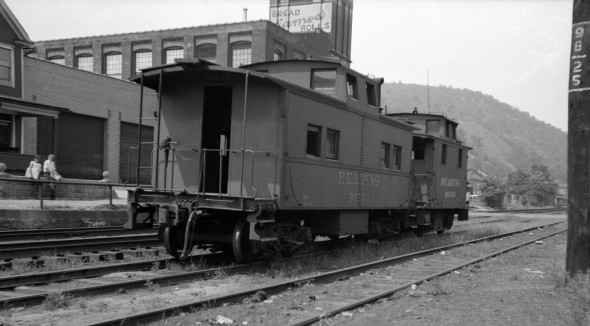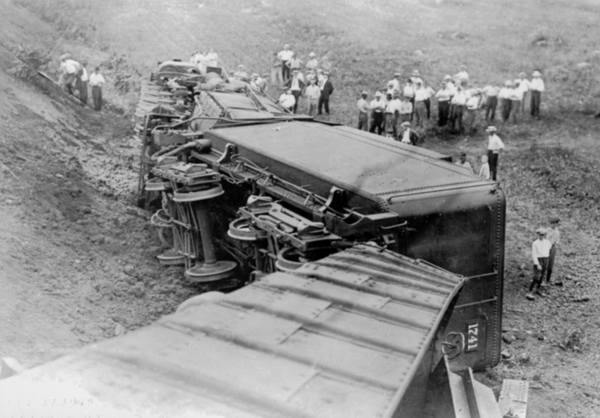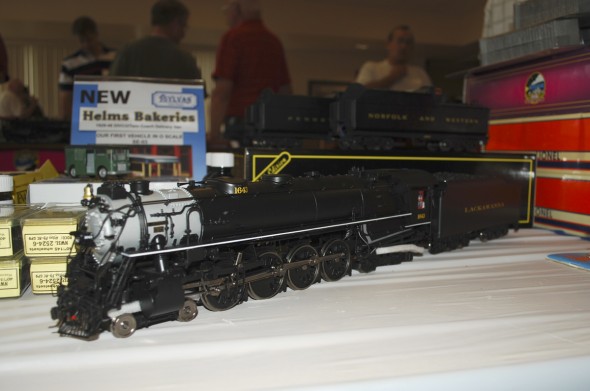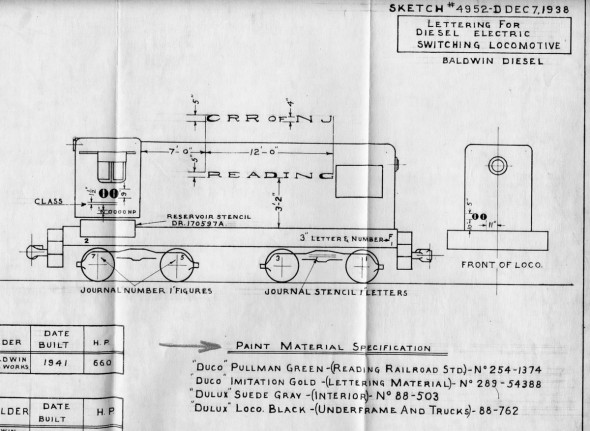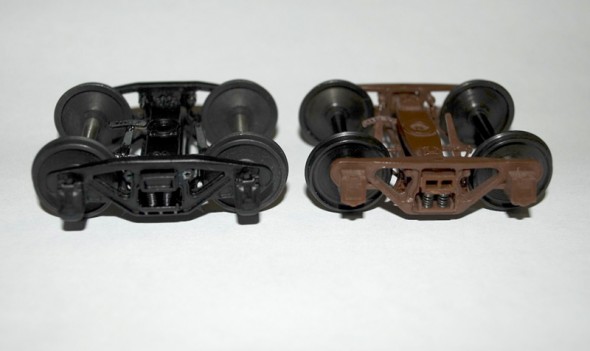
Yoder P48 Vulcan truck on left, San Juan P48 Vulcan truck with Protocraft 33″ wheelset on right.
While at the Strasburg show I picked up a pair of the new Yoder Vulcan p48 trucks. The Yoder website shows the trucks are out of stock in P48, but he had some on the table at the show. The trucks come fully assembled and include a screw so that they could be mounted onto one of Rich’s models.
I had held back before on buying these because I have several pair of San Juan’s Vulcan truck on the shelf and really did not know much about the design. When I got home and set the truck next to a San Juan truck, I was pleased to see that they were different. This started a little digging to find out some more information about the trucks.
I looked at the article “Arch Bars to Roller Bearing, Freight car trucks 1900-1960″ by Richard Hendrickson in Volume 4 of the Railway Prototype Cyclopedia. Where I found out the Vulcan truck was manufactured by American Steel Foundries in the early 1920′s. They were similiar to Andrews trucks of the time, with a cast steel side frame with seperate journal boxes. Where they differed is that the Vulcan design eliminated the need for a bottom retainer bars by bolting the journal box into pedestal jaws.
The article show photos of two different Vulcan designs one an earlier L-section and one a later U-section side frame castings.
In Robert Karig’s book, Coal Cars the first three hundred years, he speaks of the Vulcan design in chapter six on Freight car trucks. “George G. Floyd was awarded a patent for a side frame with pedestal mounted journal boxes on May 3, 1910. It served as the foundation patent for the American Steel Foundries’ Vulcan side frame. Initially built in a T-Section form, the Vulcan frame was ultimately converted to a channel-section design.”
I was also surprised to see that Rich’s trucks were completly within NMRA spec for P48. Not all of the trucks I have measured before from Rich for Standard O scale were, so this was great news. The San Juan truck does have nice casting letting on the truck sideframes that the Yoder’s are lacking.
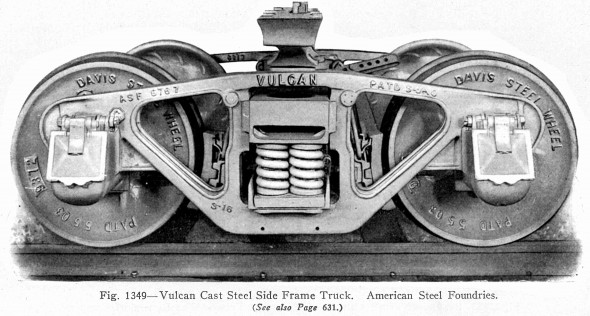
Vulcan Truck from 1922 Car Builders Cyclopedia
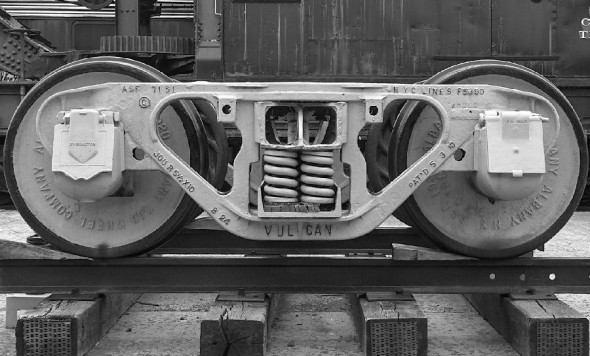
Vulcan truck with NYC markings on display at the Danbury Railroad Museum, Danbury, CT.

